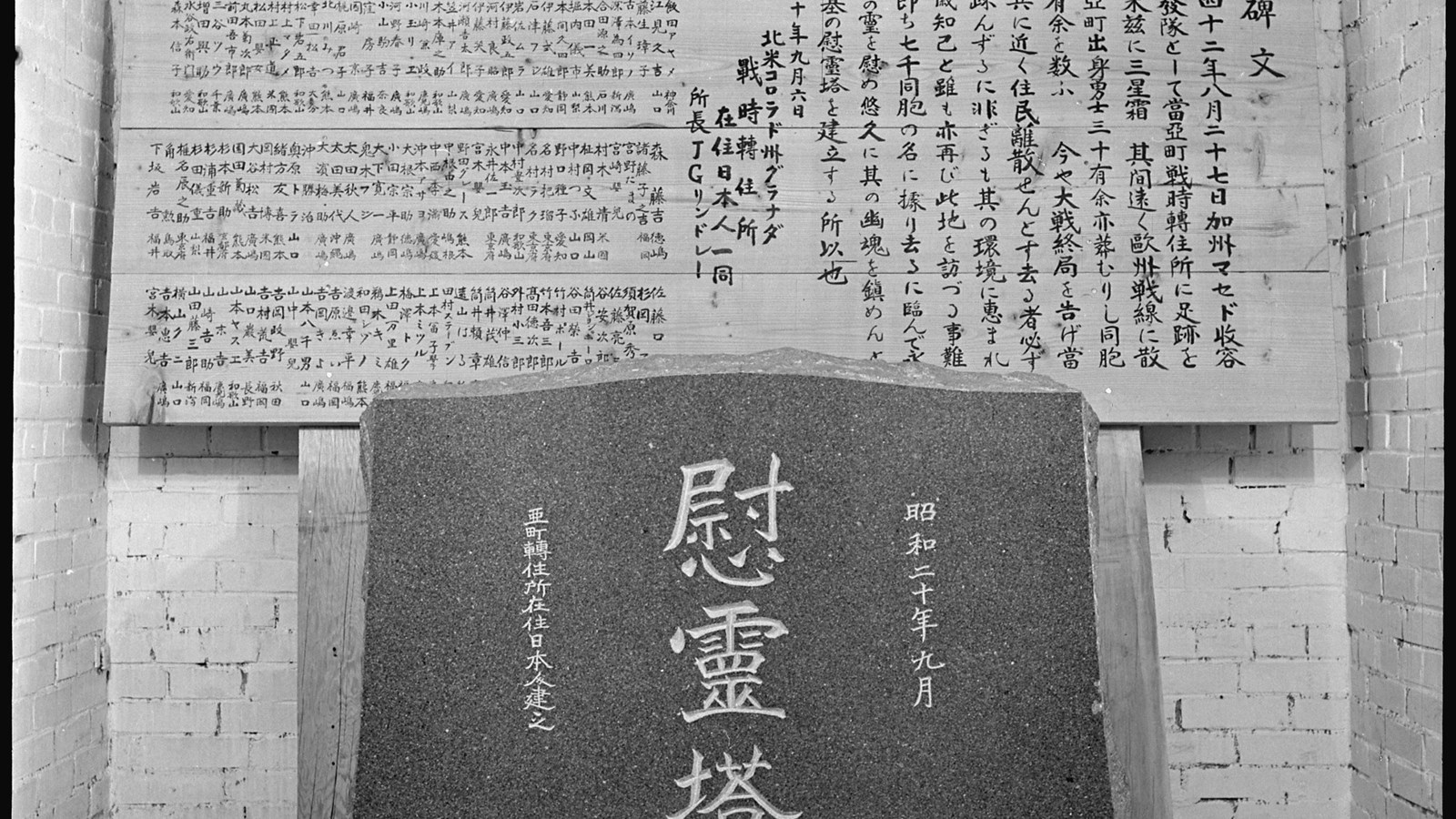Last updated: September 9, 2025
Place
Amache Cemetery

DOI/WRA image
History
In the southwest corner of Amache National Historic Site is the original cemetery and monument house. Established between 1942 and 1945 when the area was Granada War Relocation Center, the cemetery includes 11 grave plots, ten with markers and one without. According to WRA records, 106 deaths occurred at Amache, although many remains were voluntarily removed after Amache’s closure in 1945.
A brick memorial building stands in the northwest corner of the cemetery. originally built to be a columbarium, or a place to store cremated remains. It was never used as intended since the Japanese did not want the ashes to be left or forgotten. Instead, in 1945 as people were being relocated and released, a three-piece memorial was designed by Rev. Masahiko Wada and a memorial committee. In the building, a granite stone honors those who passed away in Amache and is etched in English and Japanese. Above the stone, the names and family information of the people who passed away in Amache and the names of the 31 Japanese American soldiers whose families were incarcerated here is etched in Japanese on a wooden panel. A gold star shield honoring the 31 soldiers hung on the east wall. The people incarcerated at Amache etched the granite stone, wood memorial salutation, and gold star shield memorial.
Prior to organized preservation at Amache, the memorial house was broken into. The wooden memorial honoring those who died in Amache was saved from burning and is on loan to the Japanese American National Museum in Los Angeles, California. The gold star Honor Roll shield is missing. In 1983, a second memorial inscribed with US military casualties from Amache was erected at the cemetery by the Denver Central Optimists Club. It is large concrete obelisk with a memorial salutation on the front and the Amache Honor Roll names on the east and west sides.
The Monument Today
Many visitors and relatives of the deceased continue to leave offering and memorabilia at the cemetery. Although the offerings and memorabilia left at the cemetery are contemporary and ongoing, they also have potential historical significance. The National Park Service recognizes that many of the offerings and memorabilia left at the cemetery are worthy of collection and preservation. Since its closure in 1945, the Granada War Relocation Center Cemetery has remained a place of reflection, worship, pilgrimages, protest, and a place to reach out to share an experience with strangers.
In the spring of 2025, the National Park Service installed replicas of the wooden memorial boards and gold star shield. Visitors to the cemetery can now see all three memorial pieces in the way it was designed to be seen.
Translation
Wooden planks (right side)
Three years have passed since the advanced party set foot in the Amache wartime Relocation Center, arriving from Merced Assembly Center in California on August 27, 1942. During that time, thirty-some brave soldiers from Amache lost their lives at the remote European front, and we count more than one hundred ten fellow countrymen who were buried here. Now that the great war has come to an end and with the closure of this camp, the residents are soon to be dispersed. People who depart are not necessarily going to forget those who are buried here, but if their circumstances are not favorable, even their relatives and acquaintances may have a difficult time revisiting this place. Therefore, as we leave, we are erecting a monument wall, in the name of their seven thousand fellow countrymen, hoping to honor forever the memories of the buried, and to rest their departed souls to eternity.
September 6th in the twentieth year of Showa (1945)
Granite stone
Right: Date - Twentieth year of Showa (1945)
Middle: Irei - "Soul Consoling Place"
Left: Amachi Japanese Residents
